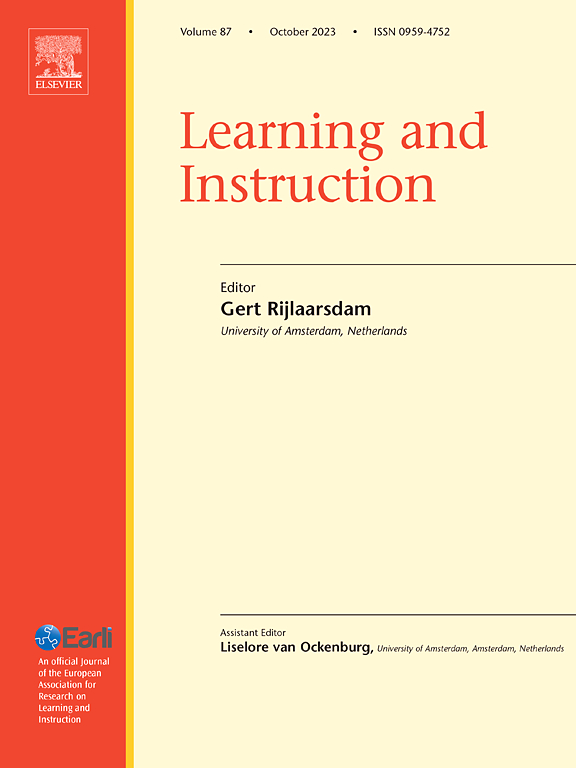探究阅读理解与执行功能的关系:阅读理解测试水平是否重要?
IF 4.9
1区 教育学
Q1 EDUCATION & EDUCATIONAL RESEARCH
引用次数: 0
摘要
当代解释阅读理解的模型增加了额外的变量,如执行功能来解释学生的表现。执行功能是一套认知技能,使个人能够计划、组织和调节自己的行为以实现目标。执行功能与阅读理解之间的关系并不是决定性的,其结果可以部分地由阅读理解的评估水平来解释。目的研究执行功能成分与不同阅读理解水平之间的关系。样本参与者是395名智利四年级学生。方法通过抑制、工作记忆、认知灵活性以及单词、句子和文本阅读理解等测试来评估执行功能。结果回归分析表明,执行功能解释的方差量随阅读理解水平复杂性的增加而增加。相比之下,执行成分模型在文本层面上对阅读理解的影响最大。抑制、工作记忆和灵活性在不同水平的阅读理解中存在显著差异。结果表明,阅读理解任务的复杂程度决定了执行功能在解释这一关系中的作用,在所有测试的理解水平中,抑制和工作记忆是执行功能中差异最大的部分。本文章由计算机程序翻译,如有差异,请以英文原文为准。
Exploring the relation between reading comprehension and executive functions: Does the level of reading comprehension test matter?
Background
Contemporary models for explaining reading comprehension add additional variables such as executive functions to explain students' performance. Executive functions are a set of cognitive skills that enable individuals to plan, organize, and regulate their behavior to achieve goals. The relation between executive functions and reading comprehension is not conclusive and results can partly be explained depending on the level at which reading comprehension is assessed.
Aim
This study examines the magnitude of the relation between executive functions components and different levels of reading comprehension.
Sample
Participants were 395 Chilean fourth grade students.
Method
Executive functions were assessed through tasks of inhibition, working memory and cognitive flexibility, as well as reading comprehension at the level of words, sentences and texts.
Results
Regression analysis shows that the amount of variance explained by executive functions increases with the complexity of the reading comprehension level. Comparatively, the executive components model accounts for the most variance in reading comprehension at the text level. Inhibition, working memory and flexibility share significant variance with all levels of reading comprehension.
Conclusions
The results suggest that the level of complexity of the reading comprehension task used determines the effect of executive functions in explaining this relation, with inhibition and working memory being the executive component that shares the most variance across all comprehension levels tested.
求助全文
通过发布文献求助,成功后即可免费获取论文全文。
去求助
来源期刊

Learning and Instruction
Multiple-
CiteScore
11.30
自引率
4.80%
发文量
109
期刊介绍:
As an international, multi-disciplinary, peer-refereed journal, Learning and Instruction provides a platform for the publication of the most advanced scientific research in the areas of learning, development, instruction and teaching. The journal welcomes original empirical investigations. The papers may represent a variety of theoretical perspectives and different methodological approaches. They may refer to any age level, from infants to adults and to a diversity of learning and instructional settings, from laboratory experiments to field studies. The major criteria in the review and the selection process concern the significance of the contribution to the area of learning and instruction, and the rigor of the study.
 求助内容:
求助内容: 应助结果提醒方式:
应助结果提醒方式:


